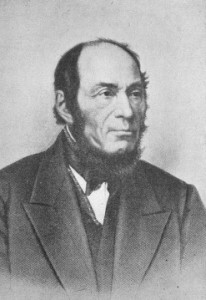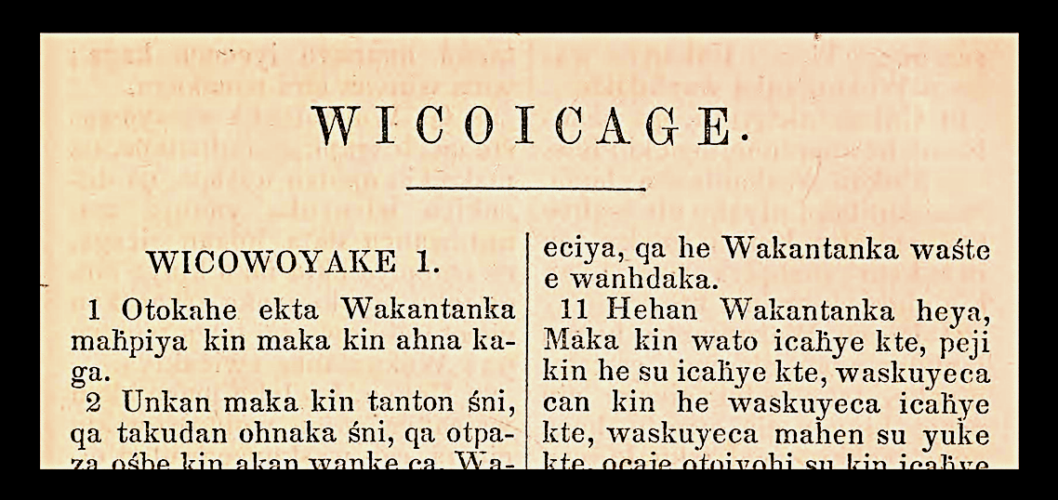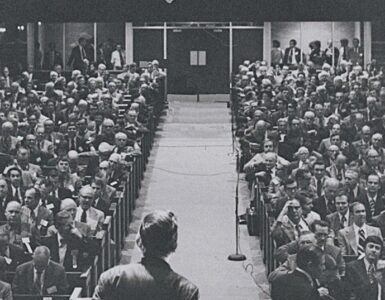 Thomas Smith was born March 1800 in Union District, South Carolina, to Rev. William and Mary (Smith) Williamson. His father was pastor of the Presbyterian Church in Fair Forest. In 1805, the family moved to Adams County, Ohio, where Thomas studied in local schools to prepare for further work at Jefferson College in Canonsburg, Pennsylvania. He began studying medicine in Cincinnati but transferred to Yale to complete the Doctor of Medicine graduating in 1824. Dr. Williamson returned to Ohio to intern with a local physician in West Union before moving to Ripley to set up his own practice. In 1827, he married Margaret Poage, the daughter of Col. James Poage. During the first six years of marriage the Williamsons had three children, but they died in their early years with two passing away within just a few months of each other. In the early 1830s cholera occurred several times in Ohio and young children were especially susceptible to the disease, so the Williamson children may have died of cholera. Thomas and Margaret were stunned by the three-fold tragedy. The deaths raised questions of their direction in life and what would God have them to do. Thomas had come to faith in Christ while in college and as he and Margaret discussed their options, they believed they would serve the Lord in missions to the American Indians.
Thomas Smith was born March 1800 in Union District, South Carolina, to Rev. William and Mary (Smith) Williamson. His father was pastor of the Presbyterian Church in Fair Forest. In 1805, the family moved to Adams County, Ohio, where Thomas studied in local schools to prepare for further work at Jefferson College in Canonsburg, Pennsylvania. He began studying medicine in Cincinnati but transferred to Yale to complete the Doctor of Medicine graduating in 1824. Dr. Williamson returned to Ohio to intern with a local physician in West Union before moving to Ripley to set up his own practice. In 1827, he married Margaret Poage, the daughter of Col. James Poage. During the first six years of marriage the Williamsons had three children, but they died in their early years with two passing away within just a few months of each other. In the early 1830s cholera occurred several times in Ohio and young children were especially susceptible to the disease, so the Williamson children may have died of cholera. Thomas and Margaret were stunned by the three-fold tragedy. The deaths raised questions of their direction in life and what would God have them to do. Thomas had come to faith in Christ while in college and as he and Margaret discussed their options, they believed they would serve the Lord in missions to the American Indians.
In the spring of 1833 physician and ruling elder Williamson began the process for becoming a missionary. He was taken under care of the Presbytery of Chillicothe and spent a year at Lane Theological Seminary studying for the ministry. At a presbytery meeting held at Red Oak in 1834 he was examined for licensure with trials including reading an exegetical paper composed in Latin answering the question whether Christ’s death was vicarious; provided a written paper on Psalm 2:7-12; and then he delivered a sermon on Mark 16:16, “He that believeth and is baptized shall be saved; but he that believeth not shall be damned.” Trials completed, he was licensed and then combined pulpit supply with scouting the region of what is currently Minnesota to determine the best place for missions to the Indians. Williamson determined the Dakota people provided the best opportunity. He reported to Chillicothe Presbytery his findings and on September 18, 1834 he was ordained an evangelist working with the American Board of Commissioners for Foreign Missions (ABCFM). Thomas, Margaret, and his wife’s sister, Mary Poage, joined Alexander G. Huggins, a school teacher, and his family for the journey. They departed Ripley April 1, 1835 and headed up the Mississippi on a steamboat arriving May 16 at Fort Snelling near Minneapolis.
During the weeks at Fort Snelling the Williamsons adjusted to frontier life and gathered goods to take with them to their place of ministry. In Fort Snelling June 11, 1835, Williamson organized the first Presbyterian congregation in the region that would become Minnesota with nineteen members and four ruling elders including U. S. Army Major G. A. Loomis. The church was named Presbyterian Church at St. Peters. Williamson later conducted the wedding ceremony for Loomis’s daughter, Eliza Edna, when she married Lt. Edward A. Ogden. It was the first marriage service by a clergyman in what would become Minnesota.
The Williamson party left the security of Fort Snelling with fur trader Joseph Renville as their guide. On June 23, they boarded a boat and travelled on the St. Peter’s River (Minnesota River) to Traverse des Sioux and left the boat to walk about 125 miles to Lac qui Parle (Lake that Talks) arriving at their destination July 9, 1835.
Two stations were established for missions to the Dakotas. One was near Fort Snelling where Samuel Pond and his brother Gideon joined by the Stevens family were to work, and the other station was at Lac qui Parle where the Williamsons, Huggins family, and Sarah Poage were stationed. The Williamsons began ministry among 400 impoverished Dakotas living in cramped quarters in a half dozen houses in the village. Other native nations were being assisted by the Federal Government, but these Dakotas were so remotely located that help was not provided.
Dr. Williamson prepared to learn the Dakota language by studying French. French was a necessary prerequisite because it was commonly used in the region with some Dakota speaking it and because the books for studying Dakota were in French. Some Missionaries had in the past tried to communicate the gospel with translators, but Williamson believed it was essential to learn their language to directly communicate the Word of God in the vernacular. Learning the language and culture, Williamson believed, showed respect for the Dakotas and it gave him nuances of meaning with idioms and dialect for more precise and sensitive communication. He also quicky began the work of Bible translation, but it would take over forty years for Williamson and his colleagues, Gideon H. Pond and Stephen R. Riggs, to complete translation of the whole Bible from the Hebrew and Greek originals.
It was not long before the missionaries saw a harvest from the seed of the Word. By May 1836, three Dakotas had been received into the church, then in May 1839 ten more professed faith in Christ. Five were added in 1840; nine more were added in 1841; and then nine were again added in 1842. In the winter of 1862-63, Dr. Williamson walked every Saturday to Mankato to preach to four hundred Dakota men imprisoned by the government during a recent war. In February 1863, Williamson and Gideon Pond baptized three hundred of the prisoners that came to believe the gospel.
Dr. Williamson presided at the organization of the first church in Minnesota, and when it came time to organize the Synod of Minnesota in 1858, he led the proceedings in St. Paul. His sermon was delivered from Deuteronomy 8:2, “And thou shalt remember all the ways which the Lord thy God led thee.” He remembered the many ways the Lord had blessed his ministry as he recounted the history of early missionary work among the Dakotas. After telling about many experiences of trial, danger, and want, sometimes facing the very real threat of starvation, he recounted God’s abundant goodness to him and his colleagues. The Foreign Missionary, August, 1879, published his sermon, a portion of which is quoted here.
However weak and unfaithful we have been, we must testify that the Lord who sent us has faithfully fulfilled to us all his promises. When he has caused us to pass through the waters, he has been with us, and the rivers, though deep, have not overflowed us; when the flaming prairie has threatened to consume us, we have walked through the fire and have not been burnt.
When we have called upon him in the day of trouble, he has ever shown himself a God who hears and answers prayer.
When assailed by deadly weapons, a hand not ours has arrested or turned aside the knife or arrow intended to reach our vitals, and we have been kept from violence, and enabled to return good for evil. Further, when all about us have been alarmed, he has fulfilled the promise, “Thou shalt not be afraid for the terror by night; nor for the arrow that flies by day” [Psalm 91:5]; and when our neighbors have been unable to sleep protected by a guard of armed men, we have slept soundly, guarded only by the Shepherd of Israel.
Physician of bodies and souls Thomas Smith Williamson died June 23, 1879. Margaret predeceased him July 21, 1872. It is noted in the inscription on his grave marker in Green Lawn Cemetery in Nicollet County, Minnesota, that he was for 45 years a missionary to the Indians. For historical perspective he died just three years after Lt. Col. George A. Custer and his troops were massacred by Lakota and Cheyenne warriors at Little Big Horn. During Williamson’s ministry he took the gospel to the Dakota people, showed compassionate concern helping them with daily needs, and he interceded with government authorities on their behalf when he believed they had been mistreated. However, he did not condone their wars with other native peoples nor their battles with the U. S. Army.
Barry Waugh
Notes—With the division of the Presbyterians in 1837 into Old School and New School, Chillicothe Presbytery was a member of the New School. The header shows the beginning of Genesis in Williamson’s translation, Wicoicage, Hdinanpapi, Lewi toope, qa Wicayawapi. The First Four Books of Moses in the Dakota Language, New York: American Bible Society, 1872. The history of First Church, Minneapolis, has some information on the Ft. Snelling Church. Minnesota achieved statehood on May 11, 1858. Major G. A. Loomis has had a biography written about him by Chaplain Kenneth E. Lawson, Christ and Country: A Biography of Brigadier General Gustavus Loomis, Greenville, SC: Ambassador International, 2011. A Memorial Discourse on Rev. Thomas S. Williamson, M.D., Missionary to the Dakota Indians: Delivered before the Synod of Minnesota, Friday Evening, October 15, 1880, by S. R. Riggs, New York: American Tract Society, [n.d.]. The General Assembly (GA) minutes of the New School (NS) are available in digital form online. It should be noted that the NS minutes are not as complete as those of the Old School (OS). There are points in the succession of minutes where the NS GA met at two or three-year intervals. R. J. Creswell, Among the Sioux: A Story of the Twin Cities and the Two Dakotas, Minneapolis: University Press, 1906. Maurice D. Edwards’s book, History of the Synod of Minnesota, Presbyterian Church, U. S. A., 1927, provides considerable information about Williamson’s work and the mission to the Dakota people. Information about Williamson’s candidacy, licensure, and ordination are from, Robert C. Galbraith, The History of the Chillicothe Presbytery from its Organization in 1799 to 1899. Prepared in Accordance with the Order of Presbytery, 1889. The grave marker inscription for Dr. Williamson was read from a photograph by Steve Krahn taken on Oct. 22, 2011, as on the Find a Grave website and as pictured in this biography. Stephen R. Riggs’s In Memory of Rev. Thos. S. Williamson, M. D. was originally published in The New York Evangelist, July 17, 1879, and was reprinted as a pamphlet; it was a helpful source and particularly beneficial because it was written by a missionary colleague. It includes a brief tribute by Williamson’s son, A. W. Williamson.





